Cork Oak Trials In Victoria
John Taylor (bio)
Paper read to the Australian Forest History Society conference in Mt Gambier in October 2015
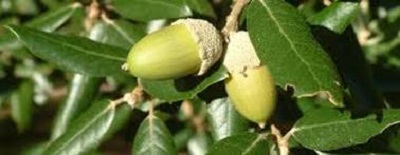
Introduction
Introduction
The genus Quercus contains 450 to 600 species distributed in all continents in the northern hemisphere, with a few species in central America extending into the southern hemisphere{tip content="Mabberley,David J. 1987. The Plant-Book. Cambridge University Press"}[1]{/tip}. There are many natural hybrids and so the taxonomy of the genus is disputed.
Quercus suber, the cork oak, occurs naturally around the western Mediterranean. It is a short (20m), spreading, slow growing evergreen tree, adapted to cool moist winters and hot dry summers. In its natural state it grows in an ecological association called the maquis, a shrubland to low forest association of hard leaved, evergreen shrubs and small trees rich in plant and animal species{tip content="Dallman, P R. 1998. Plant Life in the World’s Mediterranean Climates. University of California Press"}[2]{/tip}.
Cork from cork oaks has been used since ancient times as bottle stoppers, footwear, insulation and floats for fishing. Since the 17th Century the production and export of cork has been an important industry in Portugal and Spain. The bark is first harvested when trees are about 25 years old, and thereafter at 9 to 12 year intervals.
Large areas of both natural and planted cork oak forests around the Mediterranean are now threatened as demand for cork falls due to competition from plastic and steel. In future they could be replaced by citrus orchards or timber plantations of Pinus or Eucalyptus.
Cork Oaks in Australia
Cork oaks have been planted in Australia as specimen trees in many parks and gardens since the mid-19th Century. The oldest is said to be in the Royal Tasmanian Botanic Gardens (planted 1857) and the largest at Tenterfield in northern NSW (planted 1861; Figure 1){tip content="Hawker, J. 2003. Cork Oaks in Australia. The Botanic Garden BGANZ"}[3]{/tip}.
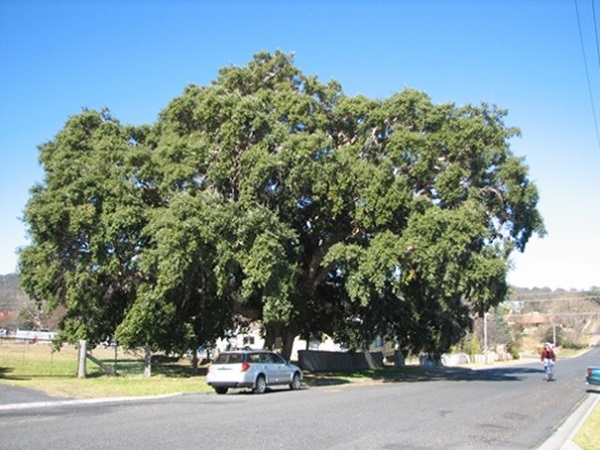
Figure 1. Cork oak at Tenterfield, northern NSW, planted 1861
The largest plantation of cork oaks in Australia was established in the Mt Stromlo Forest near Canberra in 1917 and 1920. The cork oaks were planted by Charles Weston, Officer in Charge Afforestation{tip content="Charles Weston MBE, forester and horticulturalist, established Canberra’s urban forest between 1913 and 1926."}[4]{/tip}, at the urging of Walter Burley Griffin who supplied the acorns for the initial planting. Cork was harvested from the trees from 1948 to 51 and in 1981 and 2001{tip content="Susan Parsons, retrieved from http://www.nationalarboretum.act.gov.au/living-collection/trees/tree_stories/cork_oaks October 2015"}[5]{/tip}. Now nearly 100 years old, the trees are healthy, though growth has been slow compared to some plantings in Victoria as described later in this paper. The plantation narrowly escaped being burnt in the 2003 bushfires and is now part of the National Arboretum (Figure 2).
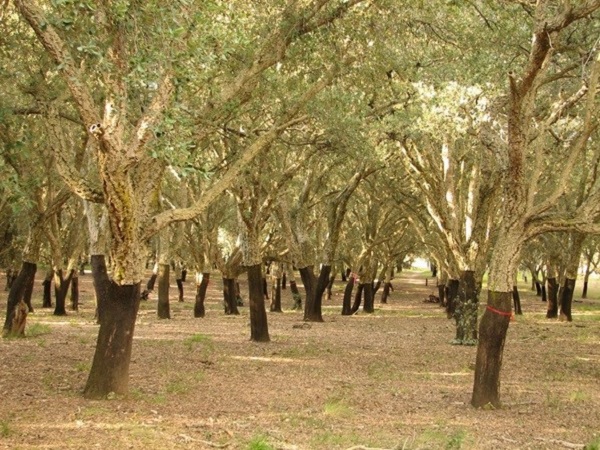
Figure 2. Cork oaks planted 1917 and 1920 in the National Arboretum, Canberra
Turning to Victoria, a small plantation of cork oaks was planted in State Forest at Mt Macedon in 1887. Cork from the plantation was harvested in 1930 by the well known cork processing firm of Vogts{tip content="Forests Commission Victoria file 63/792"}[6]{/tip}. The plantation was destroyed in the 1983 bush fires.
In the 1920s Vogts lobbied the government and the Forests Commission Victoria, urging the planting of commercial cork oak plantations to support local industry and reduce imports.
In response the Commission agreed to plant small areas in the Creswick and Beechworth forest districts. There is no information on the files as to what, if anything, happened at Beechworth, but in 1929 cork oak acorns were planted at 8ft by 8ft spacing on two acres in the south western corner of the Mt Beckworth State Forest in the Creswick Forest District (Figure 3). The acorns came from the trees at Mt Macedon. The file contains reports on the small plantation dated 1937 and 1963 – many trees were lost after planting, but the survivors grew well and today are large trees (top height 20m). Cork has not been stripped from these trees.
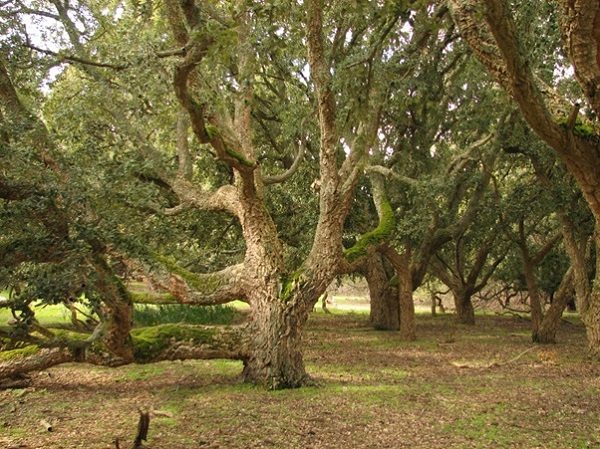
Figure 3. Cork oaks planted 1929 in Mt Beckworth State Forest
Victorian Trials
Victorian Trials
There was intermittent lobbying for the establishment of cork oak plantations during the 1940s and 1950s, largely from progress associations and councils in Beechworth and Ferntree Gully, but no serious action was taken by the Forests Commission.
However in 1962 a more serious lobbying effort began. The Hon Samuel Merrifield MLC addressed a question in the house to the Minister for Forests, asking why plantations of cork oak should not be established in Victoria. Minister Lindsay Thompson’s reply was that the species was slow growing and as a consequence the economics of cork production were likely to be unfavourable, and that the plantations would be fire prone.
Merrifield responded with a long speech in the Legislative Council disputing the claims in the Minister’s reply and giving a detailed account of how the industry operated in Victoria. He was optimistic about the likely commercial success of plantations and quoted overseas advice that cork oaks were not fire prone, but were in fact fire resistant.
In May 1963 C. E. Isaac wrote to A.O. Lawrence, Chairman of the Forests Commission, saying that “I have been in consultation recently with the Hon. S. Merrifield MLC regarding a proposal of Mr Clive Vogt of Selby that the cork oak be grown in Victoria for its value in commerce or industry, or use in parks or roads.” Isaac asked Lawrence for a statement on the matter as a basis for discussion with Mr Merrifield, and also asked about the availability of viable seed{tip content="Forests Commission Victoria file 63/792"}[6]{/tip}.
C. E. Isaac OBE was a very well connected and politically influential figure. He had been a teacher, nurseryman, soldier, local councillor and (UAP/Liberal) Member of Parliament, and was a founder of the Save the Forests Campaign and the Natural Resources Conservation League. His letter to Lawrence concluded with “Thanking you for many past favours.”
Lawrence sent a comprehensive reply to Isaac listing known cork oaks in Victoria with comments on their growth rates, querying the economics and again raising the fire proneness issue. The letter included a quick calculation showing that supplying the annual consumption of 3,000 tons of cork in Victoria would require 24,000 acres of plantations.
It is clear that Clive Vogt was behind this renewed push to get government action on establishing cork oak plantations and had supplied the detailed information on the industry to Merrifield. Clive was the son of George Vogt, the founder of the firm whose lobbying had led to the planting of the plot at Mt Beckworth in 1929.
At the end of 1963 Clive Vogt sent a long letter to the Minister and the Premier disputing the views of the Forests Commission. The letter described the production and importation of cork, the cork industry in Victoria, gave detailed estimates of costs and returns from plantations, and asked that the Commission plant 24 000 acres of cork oaks.
Links between Clive Vogt and the state political class have not been established, although the Vogts had been active in lobbying on issues such as tariffs. Maybe Vogt relied on Isaac’s influence within the Liberal Party to get a hearing for his views.
In any case, Vogt’s representations were successful. He met the Minister in December 1963 and the Minister agreed to meet Vogt in Emerald in the Dandenong Ranges to look at some cork oak trees. The inspection took place in April 1964 and Chairman of the Commission, local Member of Parliament W A Borthwick and district forester Jim Westcott also attended.
At the inspection Clive Vogt said that a group of investors aimed to plant 50,000 acres of cork oaks, and he asked the Minister for access to Crown land for this purpose. He subsequently asked the Federal Member John Jess if the Commonwealth government could make loan funds available for the plantations. This plan did not go any further.
At the conclusion of the inspection, although the Chairman said he thought the cork oaks were poor trees, the Minister told Vogt that the Commission would establish experimental plantings of cork oaks on four or five different soil types, and look at growth rates and costs and returns.
Planting the Trials
To implement the Minister’s undertaking the Commission determined that trials would be established on four or five sites of about 12 acres each. Sites on granitic outwash soils were chosen in the Creswick, Castlemaine, Yarrawonga, Benalla and Beechworth forest districts.
To get good genetic material for planting the Commission turned to Portugal. A senior forester from the Western Australian forest service, Dick Perry, was stationed in Portugal collecting seeds, cuttings and pollen from superior Pinus pinaster trees in order to improve the plantations of this species on the sand plains around Perth.
With the approval of the West Australian Conservator, the Commission approached Perry and asked him to collect superior cork oak acorns for them. Perry was unenthusiastic but located an estate in the Alentejo region in central Portugal and collected 4,500 acorns from trees that yielded high quality cork. He reported that the work was slow as each acorn had to be carefully inspected to eliminate those carrying insect larvae.
In a postscript to his report Perry wrote:
“It occurs to me that as a quarantine measure these acorns could be germinated in trays or boxes of leaf mould and when sufficiently developed transferred to pots, tubes or the field as desired. It would be safe to assume I think that these insects would all pupate in the soil and if any survive the fumigation or the dipping they will leave the acorns and enter the leaf mould. When all viable acorns have germinated and been removed from the trays, the mould, ungerminated acorns and the trays could be burnt.”{tip content="Forests Commission Victoria file 63/792"}[6]{/tip}
This procedure was followed in the Commission’s Macedon nursery, and the plants were despatched open rooted to the field by train.
Field staff had selected five sites for the trial plots (see Table 1) and budgets to clear, fence and plant had been approved. The plots were prepared and in July 1965, 700 seedlings were planted on each plot at 20 feet by 20 feet spacing (700 seedlings would cover about 7 acres).
Table 1 Plot Locations
| Benalla Forest District | Warrenbayne Plantation, western side |
| Castlemaine FD | Mt Tarrengower State Forest, south western edge |
| Yarrawonga FD | Warby Ranges SF, Tower Road |
| Beechworth FD | Mt Pilot SF, corner East Triangle and Mt Barambogie Roads |
| Creswick FD | Mt Beckworth SF, western edge (Figure 4) |
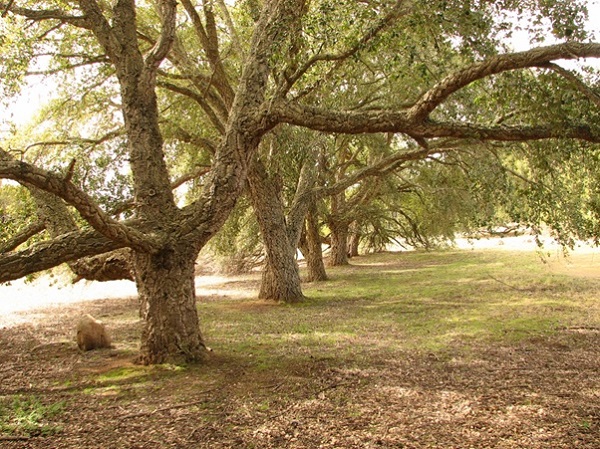
Figure 4. Cork oaks planted in Mt Beckworth State Forest in 1965
In October 1965 reports came in from the field of high seedling mortality (50% to 80%) in the plots. The reported reasons for the high mortality all related to the quality of the planting stock, specifically poor root development and the seedlings having dried out. Senior Forester Joe Morley from the Beechworth District reported in June 1966 that the cause of death of about half the seedlings was:
“1. The poor vigour of the seedlings as despatched from the nursery.
2. The loss in condition of the seedlings while in transit from Macedon to Beechworth. They were not packed well and as a result of reaching Beechworth by rail on a Friday after being despatched from Macedon on the previous Monday, there was an interval of one week between lifting and planting. Please note that open rooted seedlings were received here.”{tip content="Forests Commission Victoria file 63/792"}[6]{/tip}
In order to continue with the programme and establish fully stocked plots, the Commission asked Dick Perry in Portugal to collect another 5,000 acorns. Perry was unable to do this as he was returning to Australia, and suggested that the Commission ask the Portuguese Forest Service to collect the acorns. With Perry’s help this was arranged and 4,500 acorns were airfreighted to Melbourne in December 1965.
One third of these were discarded due to the presence of weevils and the remainder were treated with methyl bromide twice. They were then sown into deep tubes – the use of open rooted stock was abandoned.
These were the last acorns to come from Portugal – due to difficulties with collection and dealing with insect infestation and the cost of air freight the Commission decided that for the remainder of the programme it would use acorns collected from established trees in Victoria. Acorns were collected initially from trees in Portland, Colac, Macedon and Stanley and, later, in Harcourt.
In 1966 there was no planting, but stock was growing in the nursery, and in December there were 7,000 tubed seedlings available for planting in the 1967 winter. In mid 1966 there were more reports from the field of high mortalities, especially at Mt Beckworth, due to rabbits.
Dr Leon Pederick, who ran the Commission’s tree breeding programme, was acting Chief of Division of Education and Research for a time and he gave instructions that in new plantings the plots should be divided into sub plots so that the performance of stock grown from acorns from Portugal and from local trees could be assessed and compared.
In winter 1967 the existing plots were restocked and extended and a total of 26 acres was planted. Plots at Beechworth and Yarrawonga (Warby Ranges) were divided into 18 sub- plots to test three local provenances – Portland, Harcourt and Macedon.
The Benalla plot was abandoned because the rabbits and wombats could not be controlled.
Planting continued in 1968 and a new plot of 8.3 acres was planted at Mt Beckworth on a reclaimed gravel pit. There were two plots on Mt Beckworth and two in the Yarrawonga District, 6 acres on Tower Road and 6 acres at Cox’s Paddock (both in the Warby Ranges, Tower Road high in the Ranges and Cox’s on the edge of the plains).
Establishment continued to be a problem at Beechworth, with Senior Forester Noel Birch reporting in May 1968 that survival of the 1965 and 1967 plantings was only 42% and 800 seedlings were needed to restock the plot.
Also in 1968 surplus seedlings were sent to the You Yangs and Mirboo North Forest Districts and plots were planted. Senior Forester Sid Ryan reported in October 1971 that survival was nil in the You Yangs plot{tip content="File 68/1593"}[7]{/tip}. Brian Fry{tip content="Brian Fry, ex Assistant District Forester, pers comm"}[8]{/tip} recalls reporting on the Mirboo North plot in 1971 or 72 saying that grazing wallabies had prevented the seedlings from growing.
The last report on file 63/792 is a progress report on all the plots by Hans Kosmer, dated February 1970. It is optimistic, reporting few deaths and good growth, except at Cox’s Paddock, where grass control and restocking was recommended, and presents a different picture from the preceding reports.
A note on the file advises that further papers are on file 72/297. Unfortunately this file cannot be found in the Public Records Office, and so the official correspondence cannot be used to tell the story of how the trials were abandoned at some stage during the 1970s. Instead, efforts were made to speak to foresters who dealt with the programme, and the plots were visited to see how the trees had grown.
Speaking to foresters who may have knowledge of the cork oak trials did not produce definitive information on when and why the trials were abandoned. The trials were a small project and were incidental to the big programmes being delivered by the Forests Commission at the time, and staff were not able to recall the details.
The narrative above has noted that Sid Ryan reported on the planting at the You Yangs in October 1971, and Brian Fry recalls reporting on planting at Mirboo North in 1971 or 72, showing that interest in the plots continued into the early 1970s.
In the north east, Russ Ritchie reports that when he arrived in Wangaratta as Divisional Forester in 1971 he was shown the plots, but does not recall any management of the plots by district staff. He recalls that the Tower Road plot high in the Warby Ranges was growing poorly but the Cox’s Paddock or Cox’s Road plot at the foot of the hills was much better.
Terry Ashworth reported that in his time working in the Beechworth district (for Forests and Parks) from 1982 to 2007 the plots were not managed. He also reports that the Tower Road plot “was removed a number of years ago”.
It is clear that at some stage after 1971 the programme of trials was abandoned. Maybe the high mortality on all plots and the poor growth on four of the remaining six plots led to a decision to discontinue restocking and weed and vermin control, or maybe the trials were “forgotten” and management (and measurement) of the plots tapered off. The deaths of Clive Vogt in 1966 and Cyril Isaac in 1965 may have made it easier for the Commission to abandon the trials.
The Plots in 2015
The five surviving plots were located and inspected by the author. All of them are on land which is now managed by Parks Victoria.
At Mount Beckworth, now a Scenic Reserve, the western plot planted in 1965 contains healthy, vigorous trees to 15m height, but the surviving trees represent no more than 20% of the initial planting and replanting. Rabbits had eaten most of the young trees.
The reclaimed gravel pit in the north eastern section of the Mt Beckworth Reserve, planted in 1968, has more trees surviving but they are very poor. Most of the trees are three to four metres high, with a few to seven metres, with thin foliage. Waterlogging may be the cause of the poor growth.
At Mt Tarrengower the trees in the plot in the south west of what is now the Maldon Historic Reserve are very poor, three to four metres high with thin foliage. There are many gaps. Eucalypts and wattles have regenerated in the plot and overtopped the cork oaks, possibly as the result of a wildfire in the 1980s (Figure 5).
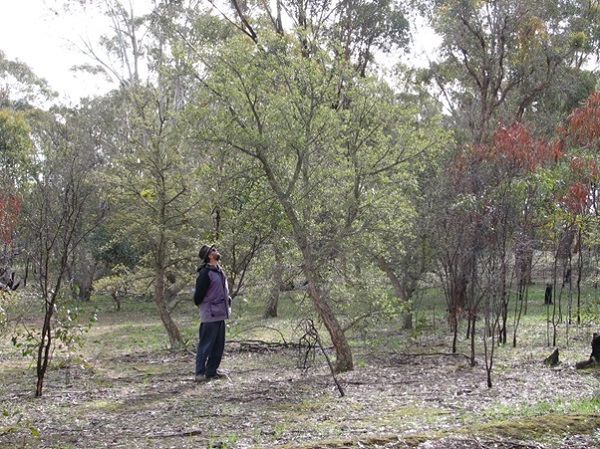
Figure 5. Cork oak plot planted in Mt Tarrengower State Forest in 1965
In the north east, the Cox’s Paddock plot is on the northern boundary of what is now the Warby Ranges State Park. The plot was planted in 1968 and today approximately 20% of the trees are missing but the remaining trees have grown well and the best are 20 metres high. This is a successful and attractive stand (Figure 6).
In the Mt Barambogie plot, now in the Chiltern-Mt Pilot National Park, there has been extensive mortality, and only 20 to 30 trees remain on the 12 acre plot, planted initially in 1965. Growth of these surviving trees has been extremely poor, with many three to four metres high and a few to nine metres. Stringybark (Eucalyptus macroryncha), grey box (E microcarpa) and black pine (Callitris endlicheri) are well established in the plot. The plot is located on top of a broad ridge with gravelly soils on granite, and the reason for the poor growth is not apparent.
To summarize the condition of the plots in 2015, the trees in the plots at Mt Beckworth west and Cox’s Paddock have grown well, although there are many gaps due to mortality in the early years after planting. There are also many trees missing in the plots at Mt Beckworth north east, Mt Tarrengower and Mt Barambogie, and the surviving trees have grown poorly. Note also that the trees planted in 1929 at Mt Beckworth have grown well following high mortality at establishment.
As stated earlier, the plot at Warrenbayne (Benalla FD) was abandoned in 1967, and the Tower Road plot (with poor trees) in the Warby Ranges was removed after the land became State Park.
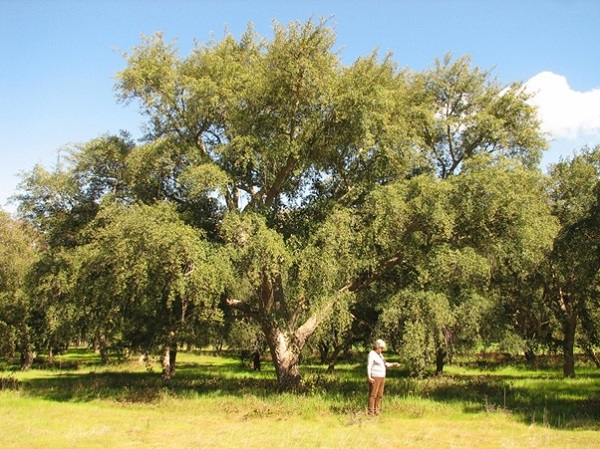
Figure 6. Cork oak in the Cox's Paddock plot
Discussion
Discussion
The Organisation
In 1958 the Forests Commission was organised into seven field divisions and six head office divisions by the Chairman A.O. Lawrence{tip content="Athol Hodgson, ex Commissioner of Forests, pers comm"}[9]{/tip}. It is interesting and surprising to note that this structure survived unchanged until 1983, when the Commission was absorbed into the Department of Conservation, Forests and Lands.
The Commission’s 1965-66 Annual Report records that there were 400 staff in Head Office including 89 professional staff, while in the field there were 1,287 staff including 140 professional staff working in 53 forest districts (by 1983 the number of districts had fallen to 44).
The records of the cork oak trials convey the impression of a competent and capable field staff who worked well with staff in head office in Melbourne.
The annual reports from the mid 1960s show that at that time the Forests Commission was managing major programs to supply hardwood and softwood logs and pulpwood to industry, to expand the area of softwood plantations, to protect the forests from fire and to undertake research. Staff training was also important, and more attention was being directed to managing use of the forests for recreation.
In this context it is inferred that the cork oak trials were incidental to the Commission’s main functions and objectives and did not receive the full attention of the organisation, even though the establishment of the trials was reported in the Commission’s Annual Reports for 1964-65 and 1965-66.
Exotic trees
The cork oak trials could be viewed as the continuing the introduction and trialling of new plant species in Australia that started in 1788, earlier if the introduction of tamarinds by Maccassan fishers in the north is included. Botanic gardens and the forest services imported and planted most of the well known timber species from Europe and north America. The forest services tended to concentrate on softwoods, but hardwoods were also trialled. While the softwood trials determined that Pinus radiata was the best softwood species for the southern winter rainfall zone, and P taeda and P elliottii were the best for the northern summer rainfall zone, and led to large areas of these species being planted, no exotic hardwood species have been widely planted in Australia.
Cork oak was included in many of the early arboreta but did not progress to any commercial plantations. The species grows slowly and harvesting bark rather than wood is outside the forestry paradigm in Australia. However cork oaks have been widely planted as park and specimen trees, and many of these have grown well and now have amenity and heritage value. There are only a few small plantations, none of which are commercial.
The Victorian cork oak trials of the 1960s could be viewed as the last attempt to introduce an exotic plantation species into Australia for large scale planting, though the large areas of Managed Investment Scheme plantations established between 1990 and 2010 did include some new eucalypt plantation species.
Politics
For several decades leading up to the 1960s the Commission had received requests to plant cork oaks and start a new industry in Victoria. There is considerable volume of correspondence on the file and at one stage the Commission sent a small number of cork oak seedlings to people who had written promoting cork oak plantations. But despite the representations that were made, since planting the trial at Mt Beckworth in 1929 the Commission had managed to avoid taking any action to plant cork oaks.
In 1963 however, the promoters of cork oak planting - Vogt, Merrifield and Isaac - started a campaign aimed at political rather than bureaucratic decision makers. This was skilfully executed, as should be expected from people like Merrifield and Isaac who were or had been members of parliament, and resulted in the Minister over riding the wishes of the Commission and determining that some trials should be established to test the growth of cork oaks in Victoria. Political priorities overcame departmental advice, not for the first time.
It is interesting that in the 1960s the government was prepared to invest in a venture such as growing cork oaks that was long term and risky. At that time the Victorian government was spending large amounts on expansion of the pine plantation estate, with the assistance of loan funds from the Commonwealth. Governments at that time took the view that they should invest in developing and owning resources in order to achieve objectives such as self-sufficiency (not relying on imports), and regional development. While they expected a return from their investments in plantations they were aware that the wood they sold would form the base of processing industries and economic activity that would bring many direct and indirect benefits over the long term.
This attitude to government investment and ownership of resources started to change in the late 1980s with the rise of neoliberalism. Neoliberalism holds that the market should be allowed to operate with minimum interference and that governments should withdraw from direct involvement in business in favour of private enterprise. Neoliberalism is now in the ascendancy in the forest sector and most government-owned plantations have been sold, along with many other government assets. Other assets which are difficult to sell, such as the native production forests, are run on business lines by government corporations.
If Clive Vogt lobbied a state government today for the establishment of cork oak plantations he would be told that if he thought it was a good idea and there was money in it, he should start a company and do it himself.
However modern governments continue to influence investment in particular industries which they wish to foster through grant schemes and tax incentives and other mechanisms. Arguably this can be very successful, in the short term at least, as in the case of the many thousands of hectares of new plantations, nearly all hardwoods, established under the Managed Investment Scheme tax arrangements. The collapse of the schemes reinforces the neoliberal view that governments should not be involved in markets and should not attempt to “pick winners”.
Silviculture
There were many cork oaks growing well in southern Australia, including the small plantation in Canberra, when the Forests Commission started its trials to determine if the species could be grown commercially in Victoria. The Commission recognised the importance of getting good genetic material and the project started well with acorns from high yielding trees in Portugal. One would expect that the trial plots would have been established successfully and that attention would be on growth rates, bark yield and costs and returns.
However of the total of seven plots planted only two displayed good growth – Mt Beckworth west and Cox’s Paddock – and both were seriously understocked. Mt Tarrengower, Barambogie and Mt Beckworth east plots have grown very poorly, as did Tower Road before it was removed. Establishment was not successful at Warrenbayne and the plot was abandoned.
The choice of locations for the plots was informed by knowledge of growing conditions in the trees’ native Portugal and Spain, and all of the plots are on granite outwash soils. The file contains no examination of the growing conditions and growth rates of trees that had grown well in southern Australia – it may have been possible to match soil and climate to good growth and this may have resulted in more carefully selected sites for the plots and better survival and growth of the trees. However it could also be claimed that in establishing plots to trial a new species there will always be failures, and these are important in helping understand the species’ site requirements.
As well, if the trials had proved to be successful it is not clear where 24 000 acres of suitable Crown land was to be found. And the fate of the cork industry, overtaken by competition from plastics and steel in less than a decade, shows how risky forestry ventures can be.
In Portugal cork oak plantations are established by planting acorns, not seedlings. Acorns were planted at Mt Beckworth in 1929 and a stand was successfully established, although with considerable mortality in the first few years (probably due to rabbits). The decision not to plant the Portuguese acorns directly into the field is justified by the risk that direct seeding would introduce new, damaging insects into the Australian environment.
However when the programme moved to using local acorns there seems to be no good reason why they could not have been directly planted. While vigorous tap root development is a problem in the nursery, in the field it gives the young seedling its best chance of surviving hot dry summers. There may well have been cultural reasons for continuing to use tubestock – that is how the Commission propagated plants and established plantations. There was no experience with direct seeding in plantations.
Sending open rooted stock from the nursery to the field by (slow) train, so that there was an interval of seven days between lifting the plants in the nursery and planting, and consequent high mortality, was clearly a mistake that set the project back a year and wasted the expensive acorns from Portugal. How this happened is unclear – maybe the cork oaks were not considered as important as other species being grown in the nursery, or it was just a mistake. The annual report for 1965/66 records that Commission nurseries produced 10.5 million seedlings, of which 9.4m were softwoods and the remainder various hardwoods, so lifting, preparing and despatching seedlings to the field was a routine procedure.
The other cause of mortality amongst the young trees in the plots was attack by rabbits, and the reports show that field staff struggled to achieve effective control, even with the help of the Vermin and Noxious Weeds Destruction Board staff, and in the case of Warrenbayne, failed to control the rabbits and wombats. Rabbits were a threat to young P radiata plantations and control measures were routinely implemented, so it is surprising that achieving effective control on the cork oak plots was so difficult.
Economics
Recording costs and, eventually, returns was a central part of the Minister’s and the Commission’s rationale for establishing the plots. It would have been possible to do a desktop study to examine how costs were matched by returns, and although this would involve making many assumptions, with sensitivity analysis some picture of the profitability or otherwise of the venture would have emerged. It is not clear that the Commission at that time had the capability to do economic modelling like this. In any case, reading the files shows that the Commission believed that the low cost of imported cork meant that Victorian grown cork could not be commercially successful.
The file contains the expenditure on initial establishment of the plots by field staff, but the costs associated with raising the plants in the nursery, transport, tending, replanting and pest control in subsequent years are not recorded. The summary report of February 1970 could have pulled together all the costs incurred to that time, but didn’t. These costs must have been considerable when all the nursery work and replanting and pest control were included.
Assessing the commercial viability of growing cork oaks in Victoria, if the trials had continued, would have required detailed establishment costs, and it is surprising that this information was not systematically collected and recorded. This suggests that the culture of the organisation placed importance on resolving silvicultural issues and getting the plants growing well but was not interested in determining whether the plantations could be commercially successful.
Conclusion
Conclusion
The cork oak trials which began in 1965 were not successful and were abandoned during the 1970s. Choosing unsuitable sites for the trials, using open rooted stock (in the first year) and inability to control rabbits were important factors contributing to the lack of success. The outcome is a little surprising because the Commission staff were technically skilled in all the relevant areas – seed selection, nursery work, site selection and preparation, and planting and protecting the young seedlings.
The decision to proceed with the trials was a political one, and came after many years of the Commission dealing with requests and pressure to start a cork oak enterprise and avoiding taking any action. An explanation or partial explanation for the failure of the trials may be that Commission staff believed that the trials were a waste of time, and could not be commercially successful.
The readiness of the Minister to agree to trial a new forest crop indicates that in the 1960s governments were prepared to invest in trials and ventures and take risks that private companies would not take. This role of government, leading with investment in research into new crops, had largely vanished by the end of the century.
That five of the six plots survived unburnt for fifty years is surprising given the number of bush fires which occur in Victoria.
These plots are of historic and scientific interest and should be listed and recognised in Parks Victoria cultural heritage registers and management plans, if not nominated to the Victorian Heritage Register.
References
________________________
- Mabberley,David J. 1987. The Plant-Book. Cambridge University Press
- Dallman, P R. 1998. Plant Life in the World’s Mediterranean Climates. University of California Press
- Hawker, J. 2003. Cork Oaks in Australia. The Botanic Garden BGANZ
- Charles Weston MBE, forester and horticulturalist, established Canberra’s urban forest between 1913 and 1926.
- Susan Parsons, retrieved from the National Arboretum Website, October 2015
- Forests Commission Victoria file 63/792
- File 68/1593
- Brian Fry, ex Assistant District Forester, pers comm
- Athol Hodgson, ex Commissioner of Forests, pers comm